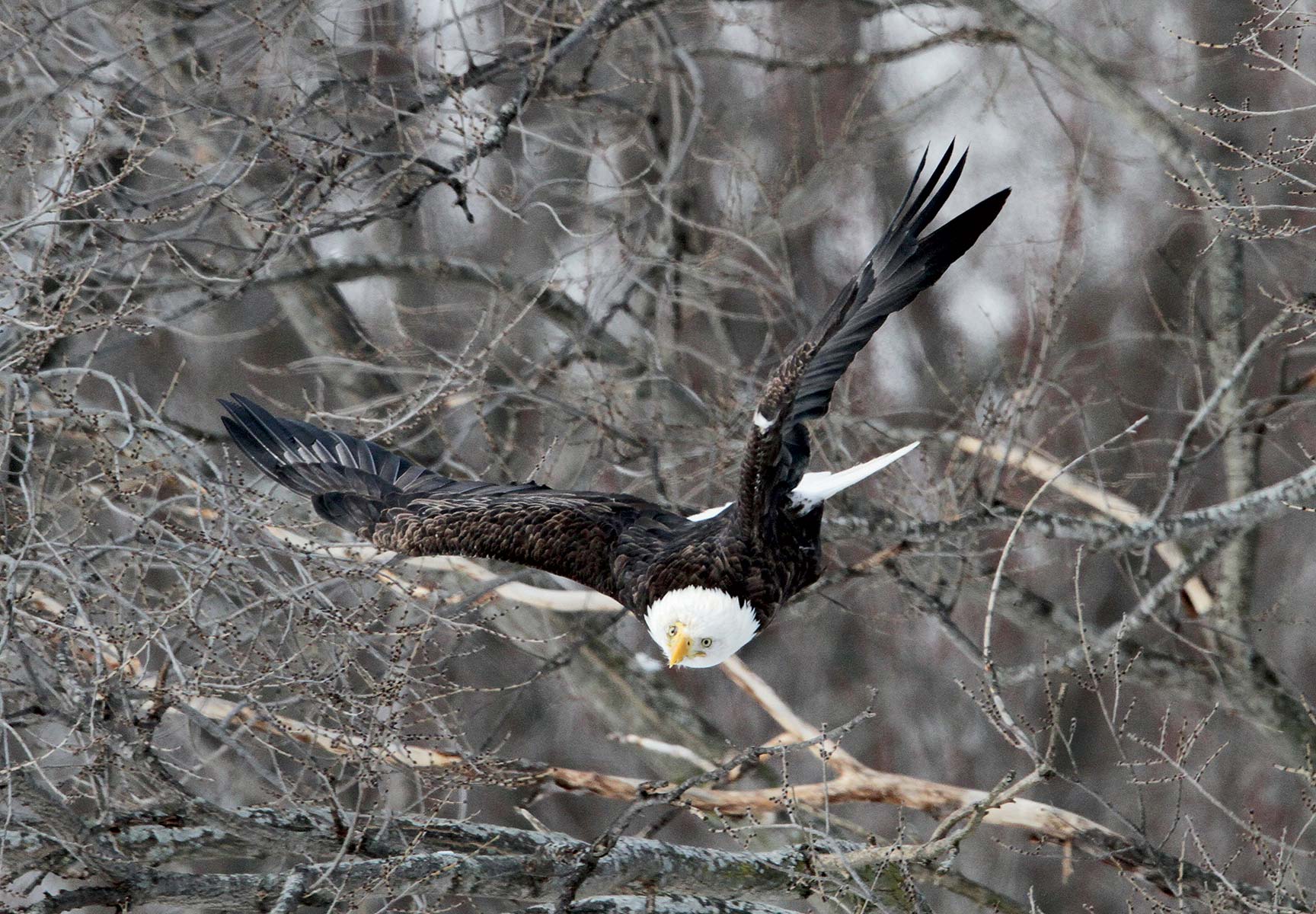Many a cold winter day, I’ve bundled up to go bald eagle watching. More than 3,000 of the once-endangered birds spend the coldest months in Illinois, making it the best place to view them in the United States, after Alaska. Why? The number of rivers and lakes here that don’t quite freeze over draws eagles to an ample food source from mid-January through mid-February. The birds congregate near locks and dams, where fish get stunned by the turbulent water and become easy pickings.
If you’re planning on making a weekend of it, travel to Lock and Dam 13 in Fulton, some two hours west, to see 50 to 100 eagles, or an hour farther out, to the observation deck at Lost Mound National Wildlife Refuge in Jo Daviess County, which attracts up to 500 eagles. The journey there can be just as exciting: Route 84, which follows the Mississippi River, traverses side waterways where I’ve seen young eagles, in mottled plumages sans white heads, plying the sky. Dozens of adults might perch in one tree.
Closer to the city, some 90 minutes southwest, the Illinois Waterway Visitors Center near Starved Rock State Park in Ottawa, hosts up to 75 birds. On the second level, outdoors, I get a good view of the eagles at the dam below. A pair breeds every year in the area, and about 10 minutes away at the back of Starved Rock Lodge, I’ve looked through a scope to see a female hunkered in a huge stick nest.
If you only have time for a quick trip and don’t mind seeing fewer eagles — 25 or 50 instead of hundreds — visit South Elgin Dam and Montgomery Dam along the Fox River in the western suburbs. Closest of all, about a dozen eagles have sometimes been seen by Lake Calumet in South Deering. Remarkably, a pair built a nest nearby in 2004, after a hundred years’ absence from the region as a breeding species.
At some of these locales, I’ve seen birds perched on wooded bluffs, swooping with talons outstretched to grab lunch from a river, resting on ice floes, and even trying to steal a fish from another eagle — a survival metaphor to bolster us all through the pandemic winter.



